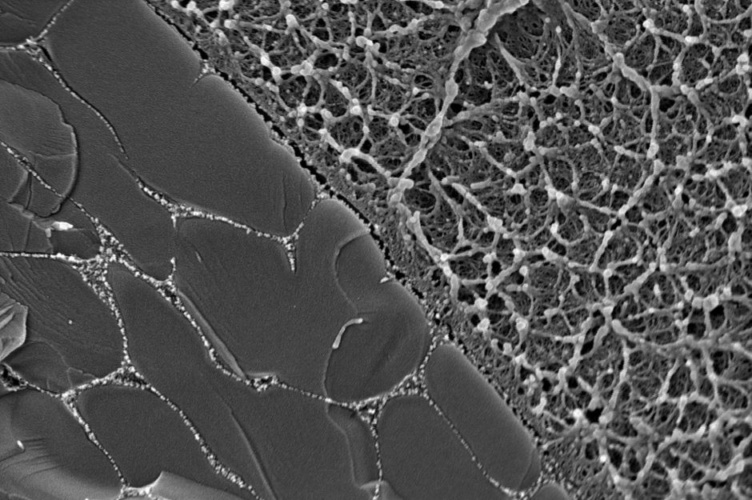
Researchers believe the new material could be used for a wide range of engineering purposes, including the potential for a new generation of lightweight bearings.
Cartilage — a soft fibrous tissue found around joints that provides protection from compressive loading generated by walking, running or lifting — is a bi-phasic porous material that exists in solid and fluid phases. It switches to its fluid phase by absorbing synovial fluid, a viscous substance produced in the joints.
This fluid lubricates the joints and when held in the porous matrix of the cartilage also provides a hydroelastic cushion against compressive forces. Because cartilage is porous, the synovial fluid eventually drains away and helps dissipate the energy forces travelling through the body, which protects joints from wear and tear and impact injuries. At this point, the cartilage returns to its solid phase and the cycle can be repeated.
Cartilage inspires new durable material for structural batteries
Harvard team's slug-inspired bio-glue binds like cartilage
“Scientists and engineers have been trying for years to develop a material that has the amazing properties of cartilage,” said Dr Siavash Soltanahmadi, research fellow in the School of Mechanical Engineering at Leeds. “There are many applications in engineering for a synthetic material that is soft but can withstand heavy loading with minimal wear and tear, such as in bearings."
Previous attempts to develop a synthetic cartilage system have focused on the use of hydrogels (materials that absorb water). While good at reducing friction, hydrogels perform poorly when under compressive force.
One reason for this is the time that it takes for the hydrogel to return to its normal shape after compression. According to the team, this problem was overcome by creating a synthetic porous material made of a hydrogel held in a matrix of polydimethylsiloxane (PDMS), a silicone-based polymer. The matrix keeps the shape of the hydrogel.
Published in the journal Applied Polymer Materials, the study reported that the load-bearing behaviour of the hydrogel held in the PDMS matrix was 14 to 19 times greater than the hydrogel on its own. The equilibrium elastic modulus of the composite was 452kPa at a strain range of 10-30 per cent, close to the values reported for the modulus of cartilage tested.
The hydrogel also provided a lubricating layer. Researchers believe that future applications of a new material based on the function of cartilage would challenge many traditional oil-lubricated engineering systems.
In a statement, Dr Michael Bryant, associate professor in the School of Mechanical Engineering said: “The ability to use water as an effective lubricant has many applications from energy generation to medical devices. However this often requires a different approach when compared to traditional engineering systems which often use oil-based lubricants and hard-surface coatings. This project has helped us to better understand these requirements and develop new tools to address this need.”




Poll: Should the UK’s railways be renationalised?
I think that a network inclusive of the vehicles on it would make sense. However it remains to be seen if there is any plan for it to be for the...